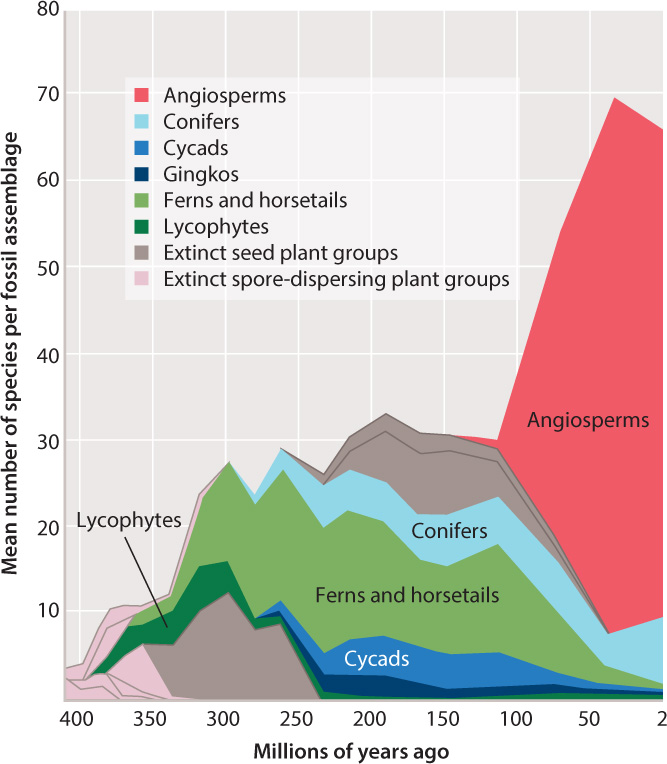33.1 PLANT DIVERSITY: AN EVOLUTIONARY OVERVIEW
In 1879, Charles Darwin wrote to botanist and long-time friend J. D. Hooker, “The rapid development as far as we can judge of all the higher plants within recent geological times is an abominable mystery.” The mystery, according to Darwin, was the difficulty in explaining the relatively sudden and recent diversification of flowering plants, or angiosperms, in evolutionary history. If we tabulate the numbers of species within each major branch on the phylogenetic tree shown in Fig. 33.1, one fact stands out. Of the nearly 400,000 species of plants present today, approximately 90% are angiosperms. Thus, a central question in the study of plant evolution is: Why are angiosperms so much more diverse than any other group of plants?

Furthermore, angiosperms are relative newcomers. They appeared in the fossil record about 140 million years ago. The oldest known evidence of land plants is found in rocks approximately 465 million years old. Thus, for more than 300 million years, terrestrial vegetation was made up of plants other than angiosperms. During this period, lycophytes, ferns and horsetails, and gymnosperms, as well as many groups of now-extinct plants, dominated the land, forming forests and landscapes unlike those that surround us today.

Once the flowering plants gained an ecological foothold, however, the number of angiosperm species increased at an unprecedented rate. As the number of angiosperm species rose, the number of species of other groups fell. Yet the total number of plant species increased dramatically. Thus, angiosperms’ hold on plant diversity is the result of both squeezing out other groups and increasing the number of species that can coexist (Fig. 33.2).
Angiosperms transformed the environments into which they diversified. With their multicellular xylem vessels, angiosperms can transport water through their stems at higher rates than plants that rely entirely on single-celled tracheids. Their uptake of CO2 for photosynthesis increases as well because CO2 uptake is directly linked to water lost to the atmosphere (Chapter 29). As a result, angiosperms can support higher rates of transpiration and photosynthesis than other groups of plants.
Recent climate simulations suggest that angiosperms may have been necessary for the formation of tropical rain forests as we know them today. Without the higher rates of transpiration exhibited by angiosperms, many tropical regions would have higher temperatures and lower rainfall. The warmer, drier conditions would have been less conducive to the luxuriant plant growth found in tropical rain forests. The new tropical forests, with their dense shade and humid understories, provided new habitats into which both angiosperms and non-angiosperms could evolve. Thus, although early angiosperms outcompeted many older lineages for space and light, their evolution also stimulated continued evolution in at least some of the groups that preceded them.